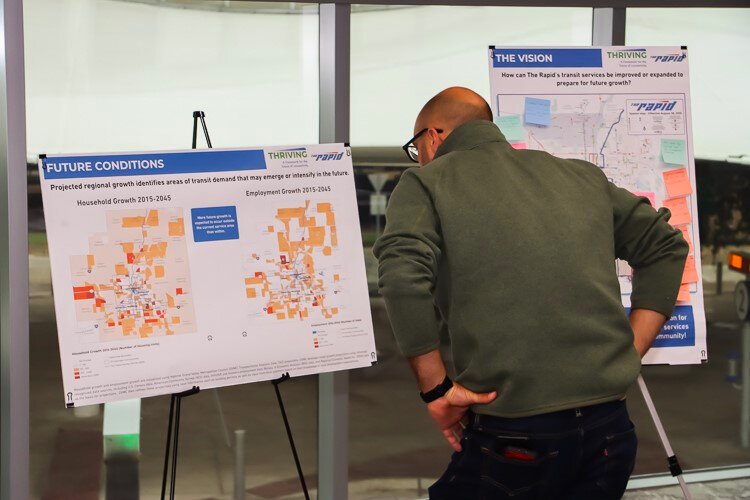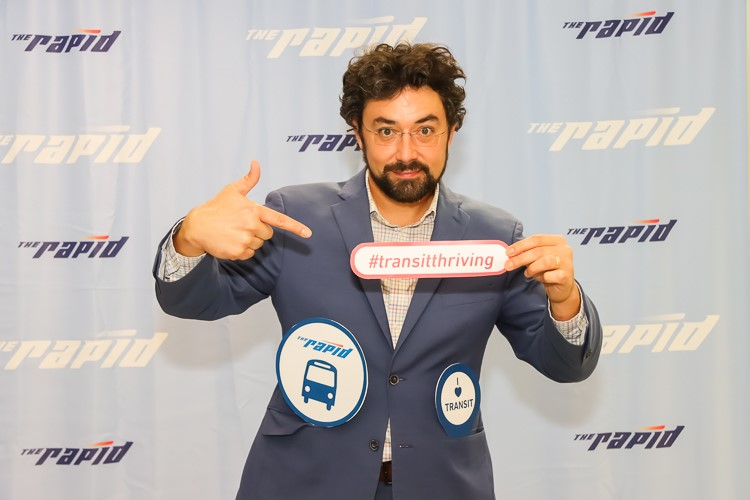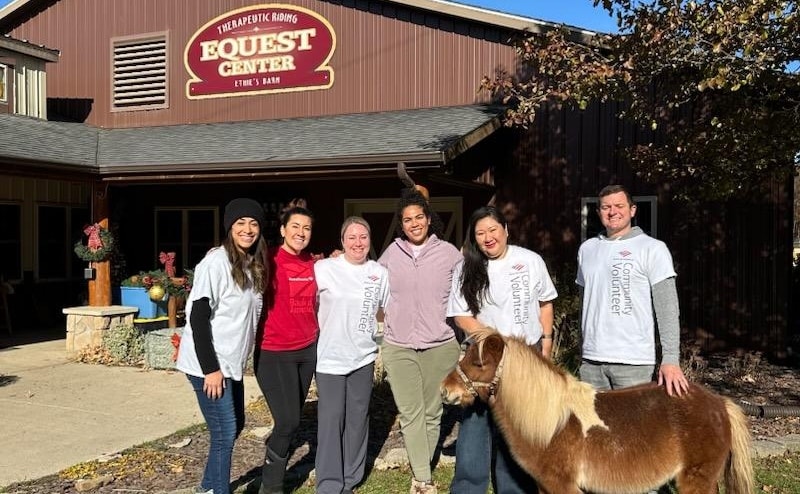Master plan seeks to improve transportation by focusing on community needs
The TMP is a public-led, community-based study meant to gather as many different opinions as possible. This is an important approach because public transportation is meant to serve the community.

Public transportation is the life blood of any thriving city and The Rapid is no different to Grand Rapids. With the city growing, public transportation will need to keep up with potentially changing needs. It is fitting, then, that The Rapid is looking to the future and following the Transit Master Plan (TMP).
“It’s called THRIVING: A Framework For the Future of Connectivity — and it’s an ongoing study that covers what the future of transit in our region will look like over the next 20 years,” says Cassi Cooper, engagement and digital media specialist for The Rapid. “[In] this TMP, we’ve partnered with consultants to help us analyze the results that the community has given us to make recommendations for the future of transit in this region. Transit plans take place every 10 years or so. Our last project took place in 2012 and it was very community dependent.”
The TMP is a public-led, community-based study meant to gather as many different opinions as possible. This is an important approach because public transportation is meant to serve the community.

In service to the community, a robust bus system is how many students get to school. Although a majority of students from families with high or middle incomes are driven to school in a personal vehicle, 20% of families with low-to-moderate incomes do not own a vehicle and 60% of students from these families primarily ride the bus, according to Housing Matters, an Urban Institute Initiative. Some adults have even transitioned to public transportation as a way to get to work. While in Michigan this percentage is rather low at 1.4%, that does not diminish the importance of readily accessible public transportation. In 2022, it was found that 72% of 19-23 year olds use public transport as their primary model of transportation. With the potential for increased utilization of public transportation, The Rapid needs to be ready for that possibility. The TMP and The Rapid see the potential for change and are doing what is necessary to connect with the community to ensure that change benefits everyone.
The Rapid has purposely made it easy for all of those in their study area to share their thoughts. Anyone interested can fill out the online survey to provide their vision for the future of The Rapid.
“The survey is 20 multiple choice and scale questions, meant to help guide people to provide the type of information we are looking for. There is also an opportunity for short answers in the event people don’t feel like they are able to voice [their thoughts] but they want to through guided questions, or if they just have additional feedback that they want to give,” says Cooper.
“There’s also a virtual sticky note idea wall on our website,” she says. “We don’t want to limit anyone’s visions, right? They can get [as] crazy as they [to] want there. This just really helps us see what people want for the future of transit over the next 20 years.”
And opinion is not just for those who ride The Rapid. Those working on the TMP are hoping to hear from everyone — and that includes those who do not ride the bus.
“Ninety-eight percent of people in our study area drive. We aren’t trying to convert anyone. We just want people to understand that public transit is important” says Nick Monoyios, director of planning for The Rapid.

In looking for the feedback of the entire community The Rapid is also seeking public opinion through public events. Most recently The Rapid held engagement sessions for the TMP to invite all to come, see what the TMP is hoping to accomplish and connect community members with those working on the plan.
The sessions included three different times in the morning, afternoon and evening to accommodate all schedules making the event as accessible as possible. The event itself was extremely interactive with many Rapid team members walking around willing to answer any and all questions, computer stations to fill out the survey and an in-person sticky note wall to collect ideas and opinions. Around 65 people showed up overall.
Public opinion shared at the engagement sessions was very diverse, as many different community members were in attendance. One notable group were students from Grand Rapids Public Museum High School who participated. The group’s teacher Nate Langel, a proponent of public transportation, encouraged them to attend and they themselves had quite a bit to say.

“I am a student that takes the bus every day,” says Sophia Ferenczi, a Museum High senior. “Public transportation is very important to students, and it makes a lot of things more equitable for students too.”
“I want to live in a city that has a really good transit infrastructure. Good quality transit systems make a city safer for everyone,” says Amelia Ferenczi, a Museum High sophomore.
“It helps a lot. Especially after my experience in D.C. where public transportation was everywhere. When we take the bus, we don’t have to ask our parents to take us everywhere. The bus offers us more freedom” said Macy and Leslie Wheeler, Museum School freshmen.
“The Rapid is important to me because I don’t have to rely on my parents,” says Eli Maximn, a Connexus Academy sophomore.

The students brought in the increasingly important viewpoint of young riders and they were treated as such, with many Rapid team members coming up to the group of students answering their questions and engaging them in the interactive activities.
Other attendees had much to say when asked why they decided to attend the planning session.
“I have been having issues with the GO! bus being late, and it’s even worse in the winter. Just this Sunday the bus was three hours late,” says Tony Bonofiglo.
“We had to cancel his appointment [because] the bus was so late,” added Tod Heiman, Tony’s teacher at Empower U with the Kent ISD.
“I think online scheduling with the GO! bus would be great,” says Bonofiglo. “Right now I have to call ahead and use my computer to speak for me.”

Every person in attendance had a valuable opinion that will go toward the TMP and the engagement sessions are not the end of The Rapid’s goal to gather public opinion. This public engagement period will continue until Dec. 8, and the Rapid team is always willing to answer questions.

“Improvement is an incremental process,” says Monoyios. “We can do anything. We just need the community’s will to accomplish it.”
Voices for Transit is a series highlighting public transportation in Greater Grand Rapids by exploring the issues that diverse communities face, lifting up the voices of residents, employers and stakeholders.
This series is underwritten by The Rapid and is editorially independent in our exploration of these themes.









